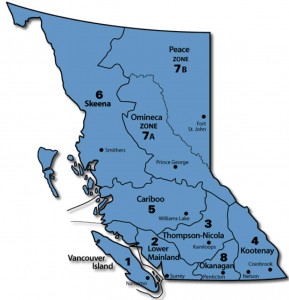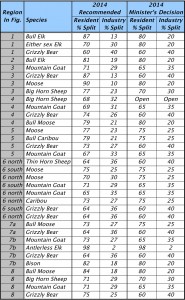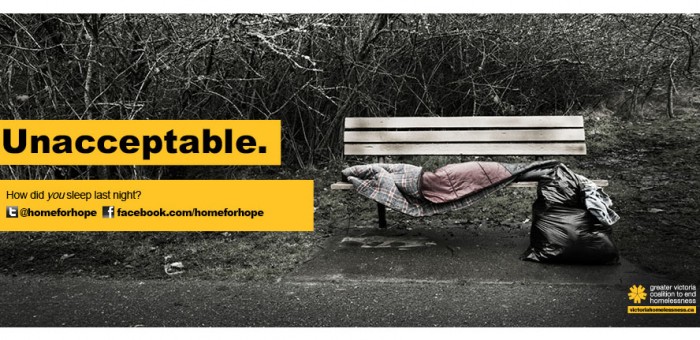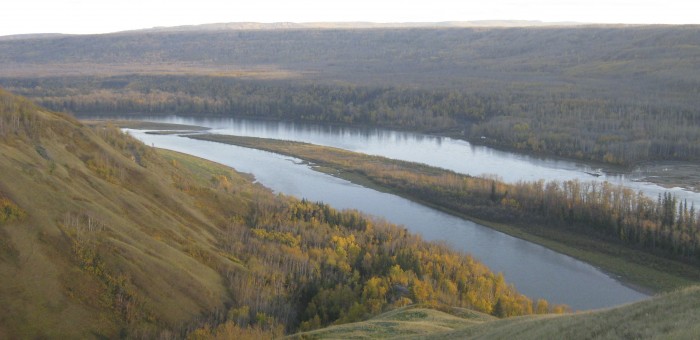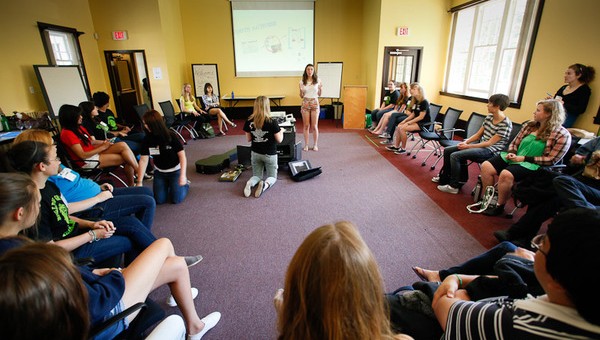Issues & Community Blog - Andrew Weaver: A Climate for Hope - Page 171
Resident BC Hunters Given Short End of the Stick
Earlier this month the BC government gave British Columbia’s 100,000+ hunters a rather astonishing Christmas present.
On December 10th, the Minister of Forests, Lands and Natural Resource Operations announced his decision concerning how hunting licenses would be allocated between industry and British Columbia’s resident hunters. In what ended up being a surprise to many people – and in stark contrast to the advice he received from his own staff – the Minister chose to increase the proportion of hunting licenses that would be available for the guide outfitting industry at the expense of resident BC hunters. For many BC hunters, this was like adding salt to an existing wound. Over the last decade there had already been a steady erosion of their allocation relative to industry’s.
I sincerely hope that the government reconsiders this decision as in my view it’s not in the public interest.
The allocation of hunting permits between industry and residents involves an extensive consultation process between the Guide Outfitting Industry (represented by the Guide Outfitters Association of BC, — GOABC), resident BC hunters (represented by the BC Wildlife Federation —BCWF) and the provincial government. The purpose of this process is to ensure that all interests are represented in a consistent, fair and transparent way. Ministry staff subsequently take recommendations to the Minster on how permits should be allocated sustainably, with a priority placed on meeting the social and ceremonial needs of First Nations while also maintaining healthy wildlife populations.
This time the allocation process seemed to take on a life of its own. Rather than accepting the permit allocation recommendations as in the past, a very different set of numbers were provided in the Minister’s decision. No one I have spoken to has any idea where these numbers came from. Certainly they did not come from the allocation process or expert advice.
Figure: British Columbia’s eight hunting regions (left) and a table (right) showing the recommended allocations as well as the Minister’s final decision.
Contrary to the established Harvest Allocation Policy and the consultation process that developed it, this new decision allocates a large increase in the proportion of licenses available to industry at the expense of resident hunters. In addition, the Harvest Allocation Policy specifically states:
Many of the changes in the table above can hardly be described as gradual. And it’s certainly not clear to me that resident hunters were a treated as a priority in light of the fact that these numbers differed so much from those recommended through the consultation process.
So why is this important?
This is yet another example of government putting the needs of special interests ahead of British Columbians. Hunting is an important part of life for many British Columbians; for quite a few, hunting provides an important source of protein for their families. In addition, resident hunters working under the umbrella of the BCWF have a rich history of conservation. And the BCWF cites a twenty percent growth in the number of BC hunters over the past 10 years.
This is not the first time that I have raised a question about how the Guide Outfitting industry is being regulated by this government. This past spring legislation was introduced that removed the requirement that a guide outfit could only be owned by a citizen of of our province. In my view, hunting priorities in British Columbia should be focused on ensuring healthy wildlife populations and meeting the needs of British Columbians. They should not have these priorities trumped by corporate interests especially now that can also be foreign-owned.
I have raised similar concerns in the past about the Grizzly Bear Trophy hunt. Unlike the Black Bear hunt, where hunters are required to “remove from the carcass the edible portions of the four quarters and loins to the person’s normal dwelling place or to a meat cutter or the owner or operator of a cold storage plant“, there is no such requirement in the case of Grizzlies. Most British Columbians, including the hunters I have spoken with, are not supportive of the trophy kill. Even the simple requirement of forcing hunters to remove all edible portions from grizzlies, as in the case for black bears, would be a step in the right direction.
In his June 2014 mandate letter, the Minister of Forests, Lands and Natural Resource Operations was directed to “continue to work with BC Guides and Outfitters and other back country operators to ensure continued access and business certainty to Crown land and provide economic and tourism opportunities in rural British Columbia.” What’s clearly missing from this mandate is the requirement that this not be done at the expense of British Columbians.
If you are as concerned about this development as I am, please take the time to write to your MLA and the Minister. You might also consider signing the petition that has been put together by the BC Wildlife Federation and/or a similar petition at change.org.
Cost Savings of Housing-First
“spending $10 on housing and supports for chronically homeless individuals
with the highest needs, result[s] in $21.72 in savings related to health care,
social supports, housing and involvement in the justice system”
The Homeless Hub
Public Opinion on Homelessness
I’ve used the phrase “hidden homelessness” a couple times throughout this series. It is a term that my team and I started using as we began to realise the amount of poverty and homelessness that goes unseen throughout Greater Victoria.
Last month I once more met with Andrew Wynn-Williams, the Executive Director of the Greater Victoria Coalition to End Homelessness, to get an update on the current status of homelessness in our region. As part of the update, Andrew informed me of their recent survey looking at public attitudes towards homelessness.
The survey provided some optimistic findings with regards to public opinion on housing first strategies. For example, 70% of people agreed that providing an individual with housing is cheaper than the costs of homelessness on government services, 90% agreed affordable housing would help reduce homelessness and 85% agreed that ensuring access to affordable housing is the government’s responsibility.
However, I was shocked to read that nearly half of the residents surveyed in Sidney and the Western Communities, and a third of those in Saanich, Oak Bay, Victoria and Esquimalt, did not think that homelessness was an issue in their communities.
While this was a disheartening revelation, I remain optimistic as their seems to be clear public support for the importance of housing initiatives.
Backing public opinion, a number of studies have been released highlighting the benefits of a housing-first strategy for ending homelessness.
Cost-Benefits of Ending Homelessness
Both national and international research has shown the extent of the possible cost-savings associated with shifting our energy from trying to manage homelessness through the provision of emergency services, to actually trying to end homelessness through a housing-first approach. A recent national report from the Canadian Alliance to End Homelessness concluded that spending an extra $46 per Canadian a year on affordable housing could dramatically reduce homelessness, and in turn reduce the $7 billion per year cost of homelessness on our economy.
To find evidence to back these claims up, we need look no further than some of our southern neighbour states. In 2005, Utah launched a homelessness reduction strategy after it was estimated that by housing the chronically homeless the state could save an average of $8,000 per person on costs such as emergency room visits and jail stays. As of 2014, the program has reduced chronic homelessness in Utah by 72%.
While direct data on the overall net savings of the program is not yet available, a similar pilot project in Denver, Colorado found significant savings. For example, total emergency related costs among project participants declined by 72.95% in two years (an average savings of $31,545 per participant), incarceration days and costs were reduced by 76% and emergency shelter costs alone were reduced by an average of $13,600 per person.
Along these same lines, the Mental Health Commission of Canada (MHCC) recently released the findings from their At Home/Chez Soi study. With projects established in five cities, including Vancouver, Winnipeg, Toronto, Montreal and Moncton, the study showed that not only can a Housing-First approach be effectively implemented in Canadian cities of varying size and ethno-racial and cultural composition, but it can also provide overall economic cost-savings while rapidly reducing rates of homelessness. This is especially true among the chronically homeless, where for every $10 invested in housing first services there was an average savings of $21.72.
Other studies have found similar cost savings, both direct and indirect, when examining housing versus emergency management of homelessness. A summary of some of the most significant findings can be found in the Coalition’s report on Housing and Homelessness in Greater Victoria.
All of these findings are consistent with estimated cost savings of a housing first approach here in Victoria, where the average annual cost of a shelter bed is $25,525 while the estimated annual cost of new supportive housing is only $16,748 per unit. And the annual cost of a rent supplement, including support, is even lower at $6,800 per unit.
A number of groups already provide supportive and affordable housing here in Victoria, including the Victoria Cool Aid Society, Pacifica Housing, St Vincent de Paul Society, and the M’akola Housing Society. But with more units desperately needed, housing remains a top priority throughout the region (to see a list of some of the current housing projects needing funding, visit the Coalition’s Priority Housing Project List).
Action Item
Poverty is something that touches us all. Whether we have lived in poverty ourselves or have seen its impact in our communities, it has affected each and every one of us.
With this in mind, I would like to invite you to share a story about your experiences with poverty and homelessness. Share it with a friend, family member, co-worker, or even your social media following.
In sharing these stories, let it serve as a reminder that poverty and homelessness are not a choice. It’s important for us to end the stigma and stereotypes that are too often associated with these issues. Those who are homeless, just as those who are housed, should not be defined by where they live. Each of us has followed a different path from the past to the present. Yet some of our paths have been rockier than others.
If you cannot think of a personal story, then help spread the stories shared by groups such as Our Place, the Dandelion Society and the Greater Victoria Coalition to End Homelessness.
Sign-up for Future Posts
To receive future posts on addressing poverty and homelessness directly to your inbox, please sign-up below.
Site C Decision a Lost Opportunity
Media Statement December 16 2014
Site C Decision a Lost Opportunity
For Immediate Release
Victoria B.C. – Andrew Weaver, MLA for Oak Bay – Gordon Head and Deputy Leader of the B.C. Green Party is extremely disappointed with the announcement by the B.C. Government today to proceed with the construction of the proposed Site C dam.
“The government has engaged in some very creative accounting to make Site C look more competitive than it is,” said Weaver. “They are trying to suggest they have found savings when all they have really done is move the financial costs of this mega project into a different category. The fact is the costs have gone up and so has the burden on taxpayers.”
The updated cost of Site C on ratepayers has been reduced from $83/MWh to $58-$61MWh, with the majority of the change coming from a commitment from government to take less in dividends from BC Hydro. However, this merely shifts the capital costs of building the dam from ratepayers to taxpayers.
Andrew Weaver maintains that Site C is the wrong project at the wrong time. Alternative energy, including geothermal, wind, solar, small-scale hydro sources and biomass, coupled with existing dams would provide firm energy and capacity at a better cost to British Columbians. They would also provide better economic opportunities to local communities and First Nations, with lower impacts on traditional territory.
A recent report by the Canadian Geothermal Energy Association (CanGEA) noted British Columbia has substantial untapped potential for firm, on demand, geothermal power which could be developed as required, in locations close to where power is needed, or near distribution lines.
“I am gravely concerned that government did not compare apples to apples when they examined other alternatives to Site C,” said Weaver. “The rest of the world is taking advantage of the decreasing cost of alternatives such as geothermal, wind and solar technology, while we are effectively subsidizing the construction of another dam.”
“With LNG development not proceeding as promised now is not the time to be borrowing billions for a dam, potentially adversely affecting the provincial credit rating, when geothermal power especially appears far more cost effective. This is lost opportunity to explore alternatives to Site C and I am deeply disappointed in the government’s lack of foresight and leadership.”
Media Contact
Mat Wright – Press Secretary Andrew Weaver MLA
1 250 216 3382
mat.wright@leg.bc.ca
Celebrating youth in our community – Chloe Van Neutegem
This is the thirteenth in our series of stories celebrating the outstanding accomplishments of youth in our community. These inspirational young adults are enriching our lives with their passion and commitment to the betterment of society.
Chloe Van Neutegem
 It’s customary on Wednesdays and Fridays for evenings to include reading through the local Oak Bay and Saanich News. This past Friday was no different. But imagine our surprise. We were in the middle of putting together the finishing touches on this article when lo and behold, and to our great delight, there she was…featured in an article about Oak Bay High School’s Youth Against Cancer Group — a group co-led by Chloe. When we interviewed Chloe just a few weeks earlier she had enthusiastically described to us her plans with the Youth against Cancer Group. It was wonderful to see their ideas come to fruition.
It’s customary on Wednesdays and Fridays for evenings to include reading through the local Oak Bay and Saanich News. This past Friday was no different. But imagine our surprise. We were in the middle of putting together the finishing touches on this article when lo and behold, and to our great delight, there she was…featured in an article about Oak Bay High School’s Youth Against Cancer Group — a group co-led by Chloe. When we interviewed Chloe just a few weeks earlier she had enthusiastically described to us her plans with the Youth against Cancer Group. It was wonderful to see their ideas come to fruition.
Chloe was born in Southampton, England and moved Victoria when she was eight. She attended Monterey Elementary for Grades 3 and 4, Willows elementary for Grade 5 and Monterey Middle School for Grades 6 to 8. She has been at Oak Bay High School since Grade 9 and is currently in her graduating year. As one might imagine, she’s an exceptional student, with a 90% average in Grade 11.
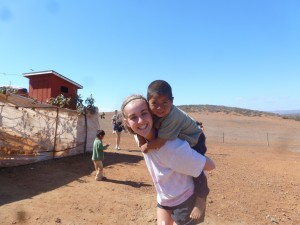 Chloe has been extensively involve in school and community activities for which she was recognized last year in receiving Oak Bay High’s Green and White Award for excellence in school and community service. Most recently, Chloe describes being humbled by her humanitarian efforts on the “Hero Holiday” in 2013, when she travelled to Mexico with a group of students from her school to help build two homes for Mexican families. “It was an experience I’ll never forget. It opened my eyes up to things we can never really understand unless we experience them. I’ll tell my kids about the trip someday so they will care about this too”. In order to take part in the Hero Holiday, a lot of fundraising had to be done. Chloe was involved in 3 major fundraising events: a “Jail or Bail” event, a Mexican Fiesta Night and a Silent Auction.
Chloe has been extensively involve in school and community activities for which she was recognized last year in receiving Oak Bay High’s Green and White Award for excellence in school and community service. Most recently, Chloe describes being humbled by her humanitarian efforts on the “Hero Holiday” in 2013, when she travelled to Mexico with a group of students from her school to help build two homes for Mexican families. “It was an experience I’ll never forget. It opened my eyes up to things we can never really understand unless we experience them. I’ll tell my kids about the trip someday so they will care about this too”. In order to take part in the Hero Holiday, a lot of fundraising had to be done. Chloe was involved in 3 major fundraising events: a “Jail or Bail” event, a Mexican Fiesta Night and a Silent Auction.
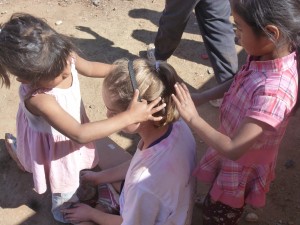 While on the hero Holiday, Chloe became close with an “adorable” seven-year-old girl named Ana Jasmine. Ana Jasmine possessed limited English but that didn’t stop them communicating with their own form of sign language. Ana Jasmine loved piggyback rides, as did all the children they encountered there. And she especially “liked to play with my hair”. As a parting gift, Chloe gave her a beret as a keepsake. But in her broken English and unique sign language the seven-year-old let Chloe know that she couldn’t take it as it looked so good on Chloe.
While on the hero Holiday, Chloe became close with an “adorable” seven-year-old girl named Ana Jasmine. Ana Jasmine possessed limited English but that didn’t stop them communicating with their own form of sign language. Ana Jasmine loved piggyback rides, as did all the children they encountered there. And she especially “liked to play with my hair”. As a parting gift, Chloe gave her a beret as a keepsake. But in her broken English and unique sign language the seven-year-old let Chloe know that she couldn’t take it as it looked so good on Chloe.
The Oak Bay students stayed with families in the community while they worked on the house-building project. Chloe warmly recalled how they were made to feel “like a part of the family” and that their hosts “had the best food!” She was inspired to become involved in the Hero Holiday by her 13-month older sister Ella, who had participated herself previously. In fact, Chloe praised Ella numerous times during the interview as being a wonderful, positive role model in her life; they are very close.
 Two initiatives that Chloe has devoted enormous time and energy to are Cops for Cancer Tour de Rock and the school’s Youth Against Cancer group. Last year, she cut 17 inches off her hair to raise $2,500.00 for Cops for Cancer. She and her very good friend Ana Adams also organized a bottle drive that brought in $5,500.00 for this year’s campaign. This year she also coordinated a live grad auction for Cops for Cancer — grad services (including things like dinner preparation) were “purchased” for a week. Chloe’s leadership role in the school’s Youth Against Cancer Group has meant working to increase awareness of issues such as the risks associated with tanning beds and the dangers of flavoured tobacco. The Youth Against Cancer group also holds school fundraisers — including Muffin Morning Mondays — with proceeds being donated to the Cancer Society. As noted in the Oak Bay News article, they prepare Smile Packages for cancer patients who are in for treatment during the Christmas season. This year they went one step further by decorating Canadian Cancer Society’s Vancouver Island Lodge.
Two initiatives that Chloe has devoted enormous time and energy to are Cops for Cancer Tour de Rock and the school’s Youth Against Cancer group. Last year, she cut 17 inches off her hair to raise $2,500.00 for Cops for Cancer. She and her very good friend Ana Adams also organized a bottle drive that brought in $5,500.00 for this year’s campaign. This year she also coordinated a live grad auction for Cops for Cancer — grad services (including things like dinner preparation) were “purchased” for a week. Chloe’s leadership role in the school’s Youth Against Cancer Group has meant working to increase awareness of issues such as the risks associated with tanning beds and the dangers of flavoured tobacco. The Youth Against Cancer group also holds school fundraisers — including Muffin Morning Mondays — with proceeds being donated to the Cancer Society. As noted in the Oak Bay News article, they prepare Smile Packages for cancer patients who are in for treatment during the Christmas season. This year they went one step further by decorating Canadian Cancer Society’s Vancouver Island Lodge.
Chloe adds volunteering at the Royal Jubilee hospital on Wednesdays to her already packed list of activities. There she chats with patients, delivers books and “gives them an ear – someone who will listen”. While some of conversations revolve simply around complaints about the food, more often than not, they are “really interesting” and she’s heard “a lot of amazing stories”. She thoroughly enjoys these visits and hearing from the largely elderly patients she encounters.
 Chloe is presently taking a heavy load of mathematics and sciences in her final year in preparation for university where she hopes to enroll in a Kinesiology or Human Kinetics program. She eventually wants to practice as a physiotherapist or occupational therapist.
Chloe is presently taking a heavy load of mathematics and sciences in her final year in preparation for university where she hopes to enroll in a Kinesiology or Human Kinetics program. She eventually wants to practice as a physiotherapist or occupational therapist.
Summers are also a busy time for Chloe. For three years now she has been employed as an assistant teacher in the Victoria International High School Program. There she facilitates interactions between the international students and takes them on outings such as hiking and kayaking. In addition to supporting the students as they improve their English, Chloe helps with organization and program development. She also somehow manages to hold down a part time retail sales clerk job.
While noting there are many great teachers at Oak Bay High, Chloe has been particularly inspired by Roxanne Taggart, the sponsor teacher for Youth Against Cancer, who “is always there when you need her help” and Murray Allan “who really steps up and motivates us – although he can be hard on us, it helps us achieve our goals”.
 Chloe loves sports, especially soccer; she’s played with Bays United since moving to Victoria at age 8. Chloe also enjoyed basketball and played on her school team in Grades 9 and 10 as well as the in the local Night League. In 2011 Chloe played on the school volleyball team and in the past she has coached a Grade 6 girls’ team at Monterey Middle School.
Chloe loves sports, especially soccer; she’s played with Bays United since moving to Victoria at age 8. Chloe also enjoyed basketball and played on her school team in Grades 9 and 10 as well as the in the local Night League. In 2011 Chloe played on the school volleyball team and in the past she has coached a Grade 6 girls’ team at Monterey Middle School.
Chloe has learned the importance of teamwork through sports and her many extracurricular activities at school and in the community. She is a born leader and someone who can be counted on to follow through with any commitment that she makes. The fact that she is able to accomplish so much outside of school while still maintaining a very high average in a challenging academic program is a testament to Chloe’s dedication, commitment and organizational skills. She’s a proven team player and team leader. In fact, we wouldn’t be surprised to find out that ten years from now, Chloe is the head physiotherapist working with a semi-professional, or professional sports team. Thank you Chloe for all that you do to improve the lives of those in our community.
Guide outfitter industry prioritized over the needs of BC hunters
Media Statement: December 15, 2014
Guide outfitter industry prioritized over the needs of BC hunters
For immediate release
Victoria, B.C. –The Government of British Columbia’s recent decision to prioritize the guide outfitting industry over the interests of resident British Columbia hunters is directly contrary to the public interest says Andrew Weaver, MLA for Oak Bay-Gordon Head and Deputy Leader of the BC Green Party.
On December 10th, 2014 the Minister of Forests, Lands and Natural Resource Operations released his decision concerning how hunting licenses would be allocated between industry and British Columbians.
Contrary to the established Wildlife Allocation Policy, and the consultation process that developed it, this new decision allocated a massive increase in the proportion of licenses available to industry. This means that BC hunters, many of whom hunt for sustenance, may go without licenses this year.
“What we are seeing is the needs of industry being placed ahead of the needs of British Columbia residents,” said Andrew Weaver. “Last spring we had legislation passed that allowed guide outfitting operations to be owned by a foreign corporations, and now the government is supporting this industry on the backs of British Columbians.”
In February 2013, the government introduced the Forests, Lands and Natural Resource Operations Statutes Amendment Act, 2014, which overhauled guide outfitting in BC. Importantly, it removed the requirement that a guide outfit can only be owned by a citizen of British Columbia, opening up the possibly that guide outfitters are owned and operated by corporations from other countries.
Since the legislation passed, government has maintained a focus on advancing the interests of this industry without mention of how it will affect BC hunters. In his June 2014 mandate letter, the Minister of Forests, Lands and Natural Resource Operations was directed to “continue to work with BC Guides and Outfitters and other back country operators to ensure continued access and business certainty to Crown land and provide economic and tourism opportunities in rural British Columbia.”
“There are over 100,000 British Columbia residents who hunt each year, a number that has been growing over time,” said Andrew Weaver. “This government needs to halt their current approach to wildlife management and ensure that it is British Columbians who benefit from their policies.”
“I fail to see why they are advancing the interests of this industry ahead of the interests of British Columbians,” said Andrew Weaver.
-30-
Media Contact
Mat Wright – Press Secretary, Andrew Weaver MLA
Mat.Wright@leg.bc.ca
Cell: 1 250 216 3382


